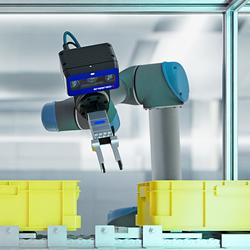Robotic Highway Safety Markers
The Robotic Highway Safety Markers system was developed by Shane Farritor a Professor at University of Nebraska-Lincoln. The Robotic Safety Barrel (RSB) replaces the heavy base of a typical safety barrel with a mobile robot. The mobile robot can transport the safety barrel and robots can work in teams to provide traffic control. Independent, autonomous barrel motion has several advantages.
First, the barrels can self-deploy, eliminating the dangerous task of manually placing barrels in busy traffic. To save costs, the robots work in teams. A more expensive "shepherd" robot with built-in Global Positioning System (GPS) navigation would position itself precisely, and then guide the placement of less expensive units, which measure out their positions based on wheel movement (a "dead reckoning" system). In tests, the robots were able to deploy themselves just about as well as humans could place them - their big wheels let them turn on a dime.
Comments (0)
This post does not have any comments. Be the first to leave a comment below.
Featured Product

